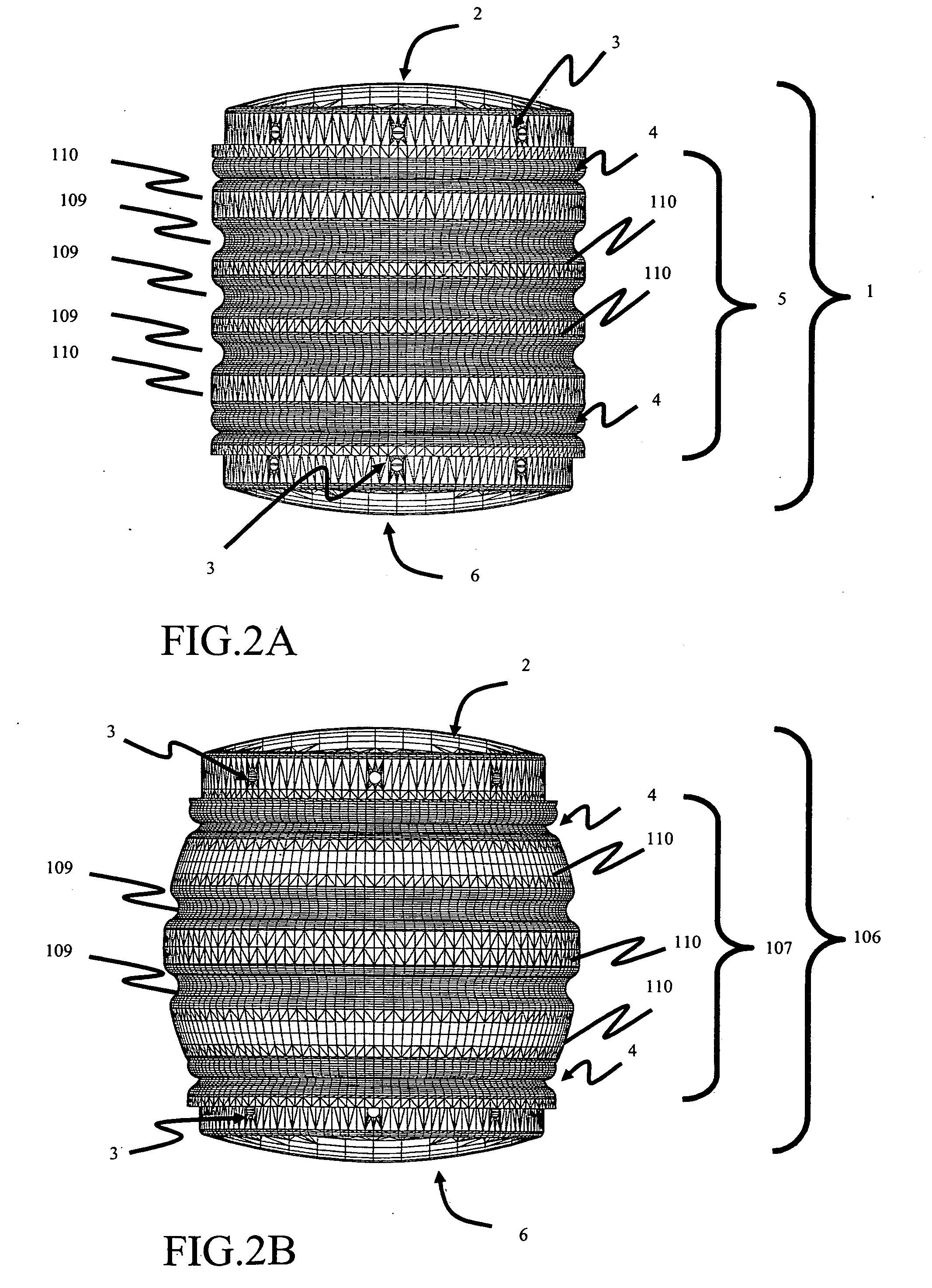Spinal disc prosthesis and methods of use
a technology for spinal discs and prostheses, applied in the field of spinal disc prostheses and methods of use, can solve the problems of not being able to meet the requirements of simple rotational joints, drastic treatments are usually not able to restore normal disc function, and further problems, so as to facilitate sagittal, lateral, polar, or axial, vertebral movemen
- Summary
- Abstract
- Description
- Claims
- Application Information
AI Technical Summary
Benefits of technology
Problems solved by technology
Method used
Image
Examples
example 1
Ball-and-Socket Joint
[0153] In one embodiment, the chambered-ball 13 (FIG. 9) fits into the spherical cavity 118 of the socket-base 14 (FIG. 8) to form a ball-and-socket joint 37 (FIG. 10). In a preferred embodiment, the ball is free to rotate about three orthogonal axes 93, 94, and 95 (FIG. 14) within the socket cavity. Thus, in one embodiment, the ball-and-socket joint allows the spatial mechanism to arbitrarily orient or point in three-dimensional space, within the angle limits of the linkage, the more distal elements of the device: the piston 12, plane-bearing guide 15, cap-plate 11, and superior vertebral plate 2. In the lower pair embodiment, FIG. 28, the elements 214, and 213 form a spherical kinematic pair, i.e., the ball-and-socket joint.
[0154] In an alternative embodiment, a girdle ring-bearing 18 and a socket ring-bearing 19, illustrated in FIG. 5, can be utilized with the ball-and-socket joint. FIG. 5 does not illustrate bearing separators and retention matrices that c...
example 2
Polar-Axis Prismatic Joint
[0160] The polar-axis prismatic joint can comprise the combination of the spherical chambered-ball 13 (FIG. 9) and the cylindrical piston 12 (FIG. 11) to form a prismatic pair. In one embodiment, the prismatic pair also comprises bearings 24 and 25. In a further embodiment, the cross-section of the chambered-ball cavity 35 is similar or identical to the piston cross-section, but should possess slightly greater radius of curvature to accommodate the piston and allow for bearing clearances. In the lower pair embodiment as illustrated in FIG. 28, the elements 213, and 212 form a cylindrical pair to provide a polar-axis prismatic joint.
[0161] Hydraulic portals 20 circle the mouth of the chambered-ball 13 to allow lubricating fluid to flow out of the chambered-ball cavity 35 to other moving parts. Four hydraulic portals 20 can pierce the bottom, circling a polar bearing 30 (FIG. 10, FIG. 12) that can be positioned in the base of the chambered ball
[0162] The p...
example 3
Spherical-Polar-Axis Linkage
[0170] In one embodiment, linking the piston 12, with a spring 26, chambered-ball 13, and socket-base 14 provides a 4-DOF spherical-polar-prismatic manipulator with load bearing capacity (FIG. 14). As the more distal elements of the prosthesis, i.e., the plane-bearing guide 15, cap-plate 11, and superior vertebral plate 2, move, the spherical manipulator (ball-and-socket joint) track their orientation 93, 94, 95 and distance traveled 89 along the polar axis 113 (FIG. 10) from the chambered-ball center.
[0171]FIGS. 15A, 15B and 15C show the operation of the spherical-polar-axis linkage 115 in flexion 90, neutral 91 and extension 92. As spinal muscles move the superior vertebra of the FSU, loading on the spring or spring-like mechanism or material within the piston changes. In a further embodiment, the principal spring axis coincides and, thus, rotates with, the polar-axis 113, causing the forces acting on the spring to either rotate the spring by means of...
PUM
| Property | Measurement | Unit |
|---|---|---|
| length | aaaaa | aaaaa |
| degrees of freedom | aaaaa | aaaaa |
| degrees of freedom | aaaaa | aaaaa |
Abstract
Description
Claims
Application Information
 Login to View More
Login to View More - R&D
- Intellectual Property
- Life Sciences
- Materials
- Tech Scout
- Unparalleled Data Quality
- Higher Quality Content
- 60% Fewer Hallucinations
Browse by: Latest US Patents, China's latest patents, Technical Efficacy Thesaurus, Application Domain, Technology Topic, Popular Technical Reports.
© 2025 PatSnap. All rights reserved.Legal|Privacy policy|Modern Slavery Act Transparency Statement|Sitemap|About US| Contact US: help@patsnap.com



